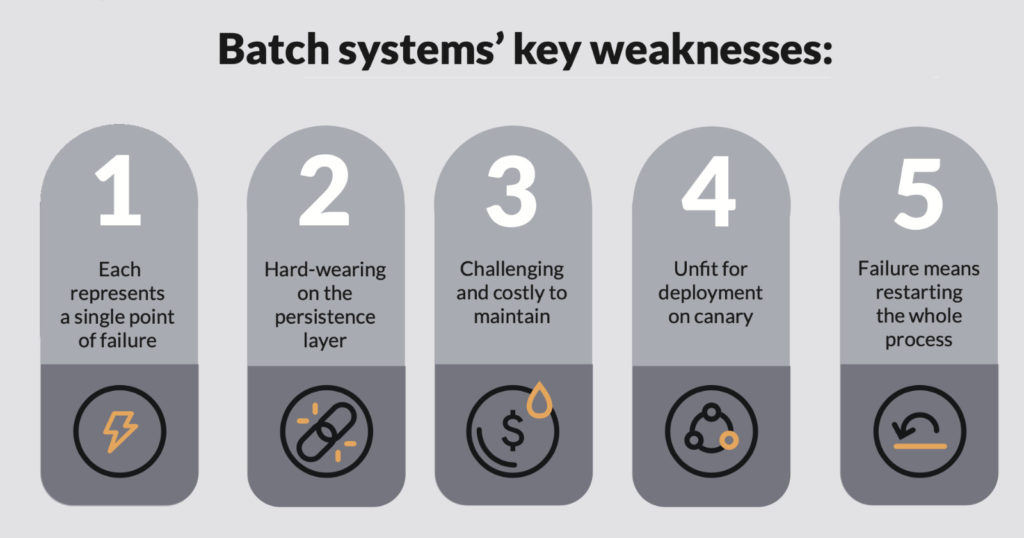Pismo has this week launched its latest deep-dive whitepaper exploring the cutting edge of financial services technology. “Event-driven architecture: the foundation of next-generation banking” explores the potential events can hold for financial institutions, large and small.
Batch routines are the rule in the financial services industry and have been for decades. Yet they present significant challenges to innovative institutions aiming to create cutting-edge products.
Traditional platforms based on mainframes effectively process millions of read/write instructions. Yet they run into problems when working in sync with modern cloud-based systems and services.
Batch processes are a chore to take care of and track. Nothing guarantees that they will start at the scheduled time. They also significantly impact the persistence layer’s data caching ability as they attempt to harness enormous tranches of data in one go.
Customers want more
In an era of 24/7 banking, legacy batch processes are anathema to customer expectations. Any instance of downtime, even for a few hours, risks disappointing customers, reputational damage, and loss of competitive advantage. Sticking plaster workarounds offer only a fraction of the service level expected.
The interconnected nature of today’s technology ecosystems means failure in one batch can create a domino effect. How reliant is batch A on the output of batch B? What happens to systems C and D when B’s inputs do not arrive?
What are events?
An event-driven model involves the passing of asynchronous messages through a broker module. This differs from the traditional remote procedure call (RPC) between APIs. The utilisation of a broker ensures others can receive the message sent by one service. These recipients can consume the message at their own pace.
An event is a versatile message format stored in immutable logs and received by consumers. Events can trigger multiple subsequent events asynchronously. Alternatively, they are stored and scheduled indefinitely, awaiting a trigger.
As events are created, they are fixed to domains or consumer nodes. In the case of a bank, these could be channels like lending, accounts, or payments. Events and endpoint consumers operate interdependently, and multiple consumers can act on the same event.
How can event-driven architecture revolutionise data?
Events enable customer service in a rapid and personalised fashion. Customer account details, transaction history, cards, and loan data are all simultaneously and asynchronously shared between different aspects of the business. This eliminates the time costs of querying a core ledger or database.
The use cases for EDA stretch across multiple verticals:
- Unique account types
- Credit card tracking
- Payment requests
- Loan lifecycle management
- Data streaming and analytics
EDA is a crucial differentiating factor for financial services firms aiming to navigate a changing market. Interconnected businesses and customers demand rapid service delivery on multiple channels.
Want to know more about this exceptional technology? Click here to read our new whitepaper today!









